A collaborative public presentation and post by Cassie Ferguson and Michelle Kielhold.
Collaborative art and neuroscience talks are back!
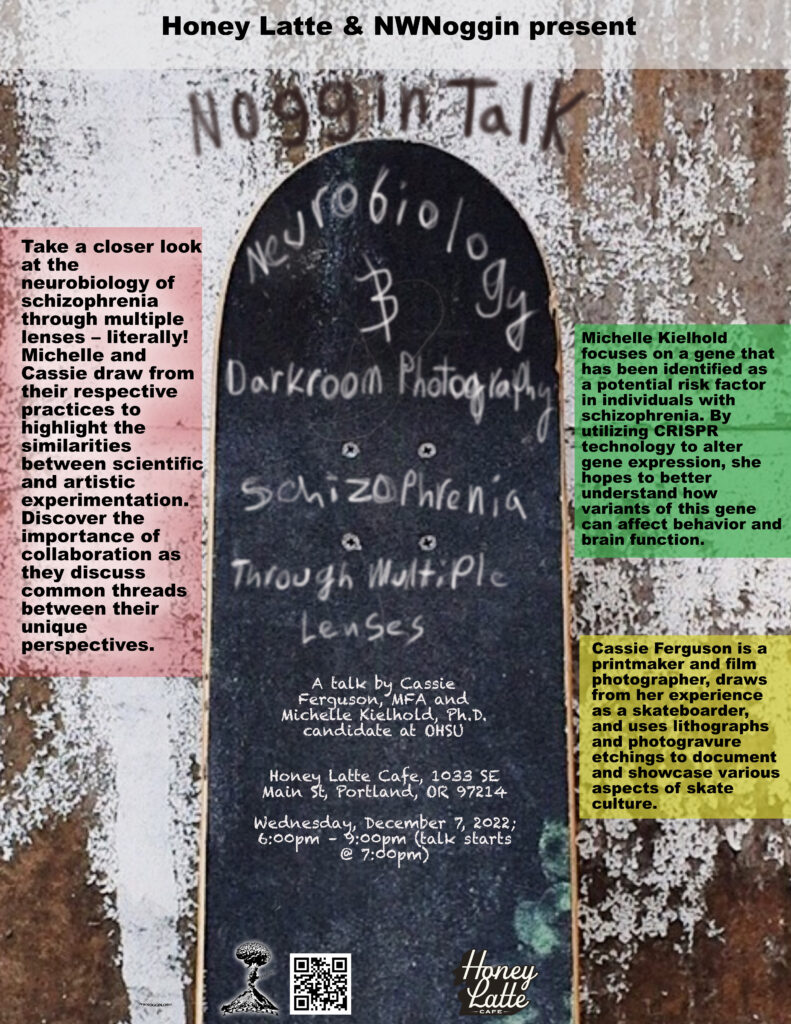
Honey Latte Cafe!
Honey Latte Cafe, 1033 SE Main St, Portland, OR 97214
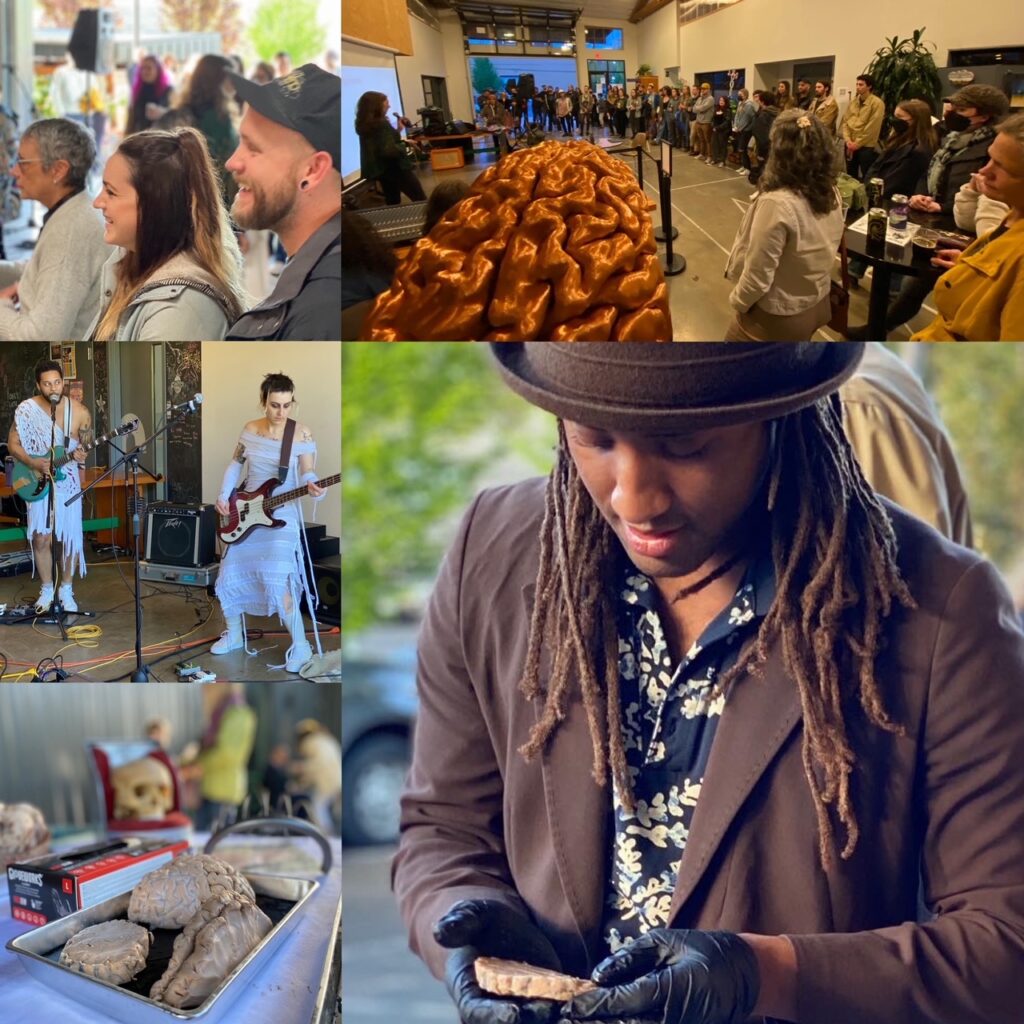
LEARN MORE: NOGGIN TALKS: Free Art & Science
In December 2022 we gathered at Honey Latte Cafe in Portland, Oregon for a resumption of NOGGIN TALKS: FREE, accessible, all ages opportunities to hear from artists and graduate/post-doctoral researchers studying the brain!
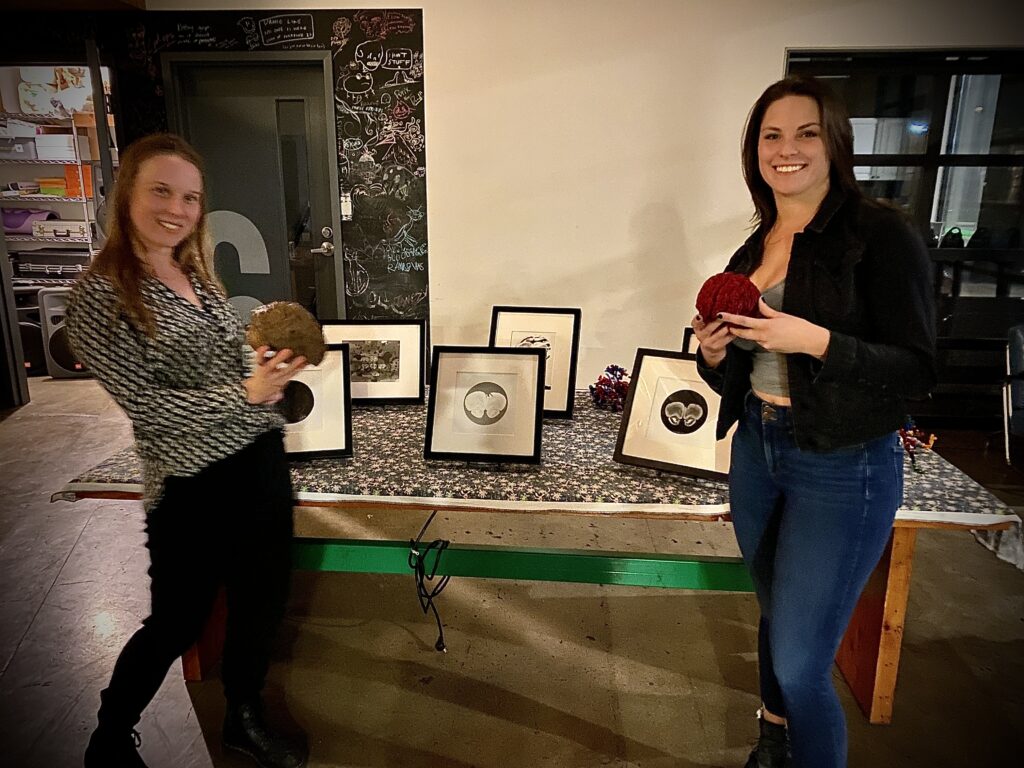
Cassie Ferguson, a Portland-based printmaker and film photographer, and Michelle Kielhold, a PhD candidate in Behavioral and Systems Neuroscience at Oregon Health & Science University, collaborated on a public presentation exploring current research on schizophrenia from a number of perspectives, including neurophysiology and darkroom photography. This is their post!
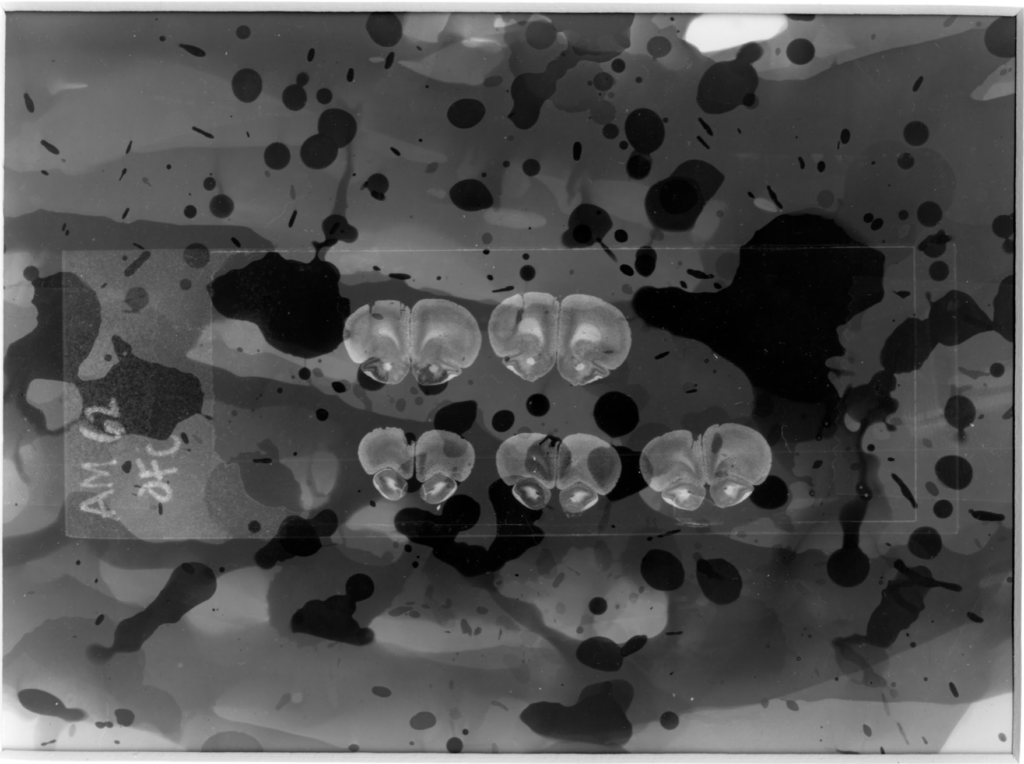
Neurobiology & Darkroom Photography:
Schizophrenia Through Multiple Lenses
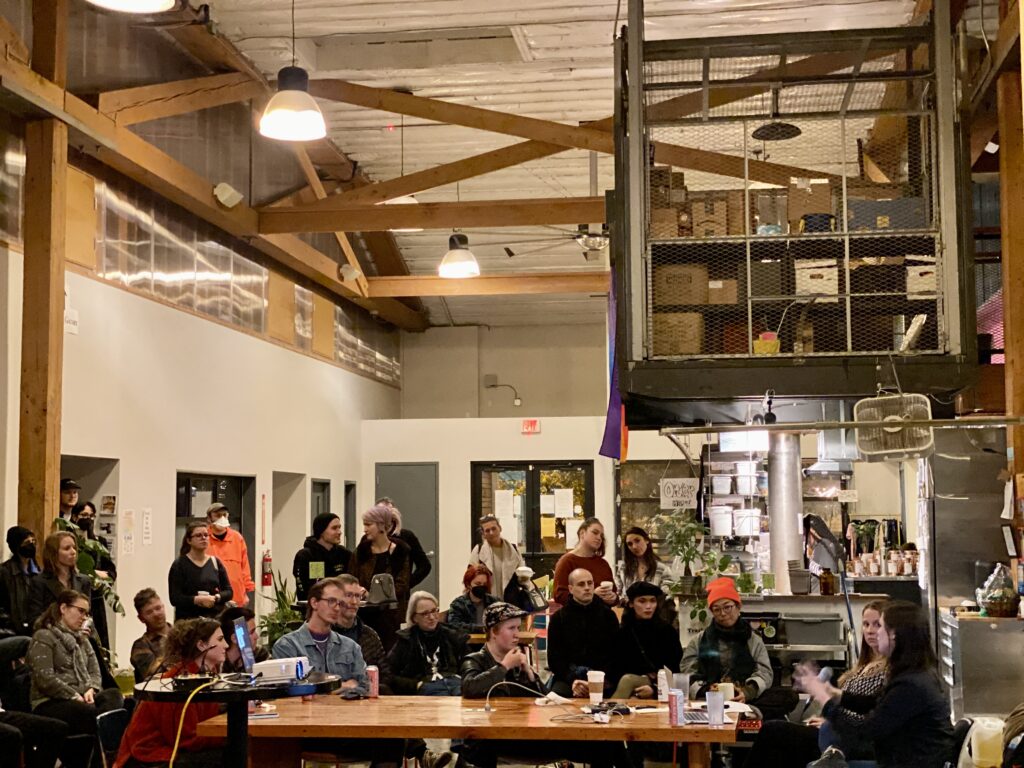
“My mind has been both my best friend and my worst enemy.”
— Elyn Saks
In this collaborative project, Michelle and Cassie explored the similarities between their respective scientific and artistic practices while taking a closer look at schizophrenia.
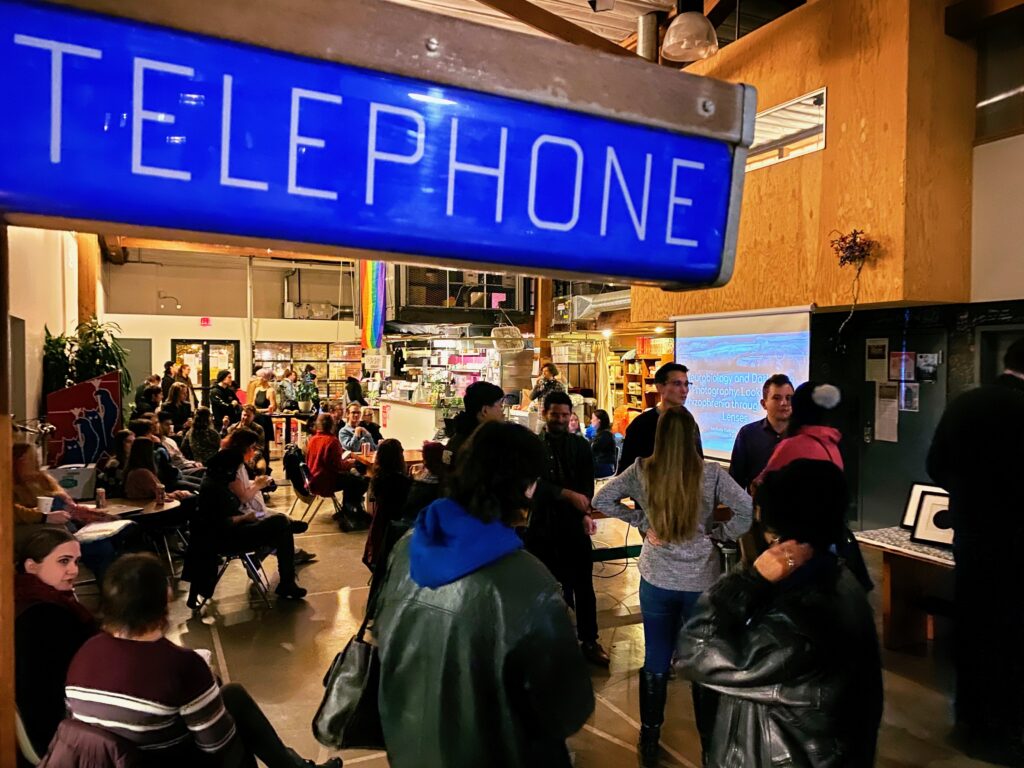
Michelle Kielhold is a PhD candidate in the Behavioral and Systems Neuroscience Program at OHSU. Cassie Ferguson (MFA) is a Portland-based printmaker and film photographer whose practice involves using print and film processes to document skateboarding culture.
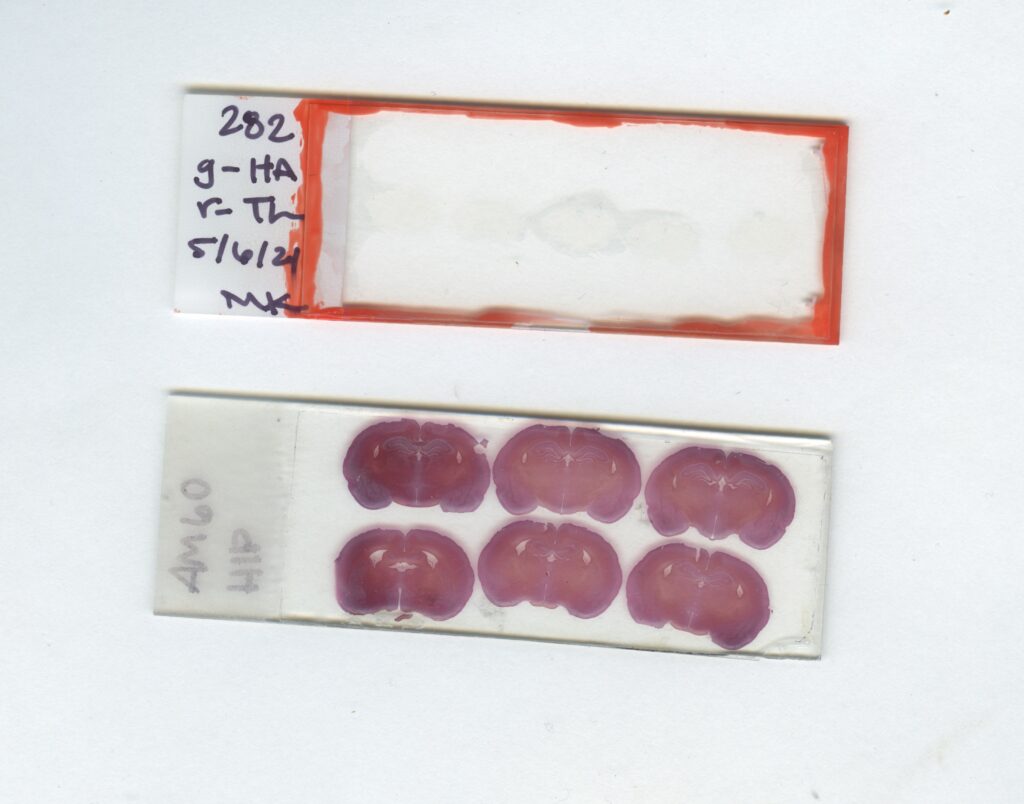
LEARN MORE: A (Brief) Look at the Influence of Skateboarding Culture
LEARN MORE: Skateboarding and the Ecology of Urban Space
Their presentation emphasized the importance of interdisciplinary collaboration by discussing their respective scientific and artistic approaches taken to explore schizophrenia through different lenses. Cassie displayed silver gelatin prints created from Michelle’s microscope slides.

Neurobiology of Schizophrenia
Current clinical descriptions of schizophrenia characterize this disorder by the presence of three different types of symptoms (positive, negative, and cognitive). Throughout the last century, different approaches have been taken to treat these symptoms.
Early treatments for schizophrenia were inhumane—those institutionalized were put into insulin-induced comas, subjected to electro convulsive therapy, and some were given frontal lobe lobotomies. These forms of treatment were eventually replaced by drugs after the development of ‘typical’ antipsychotics in the 1950’s and subsequent development of ‘atypical’ antipsychotics in the 1990’s. Today’s treatments for schizophrenia have not substantially improved since then, and this is largely because we do not understand the biological processes that underlie the symptoms that we are trying to treat.
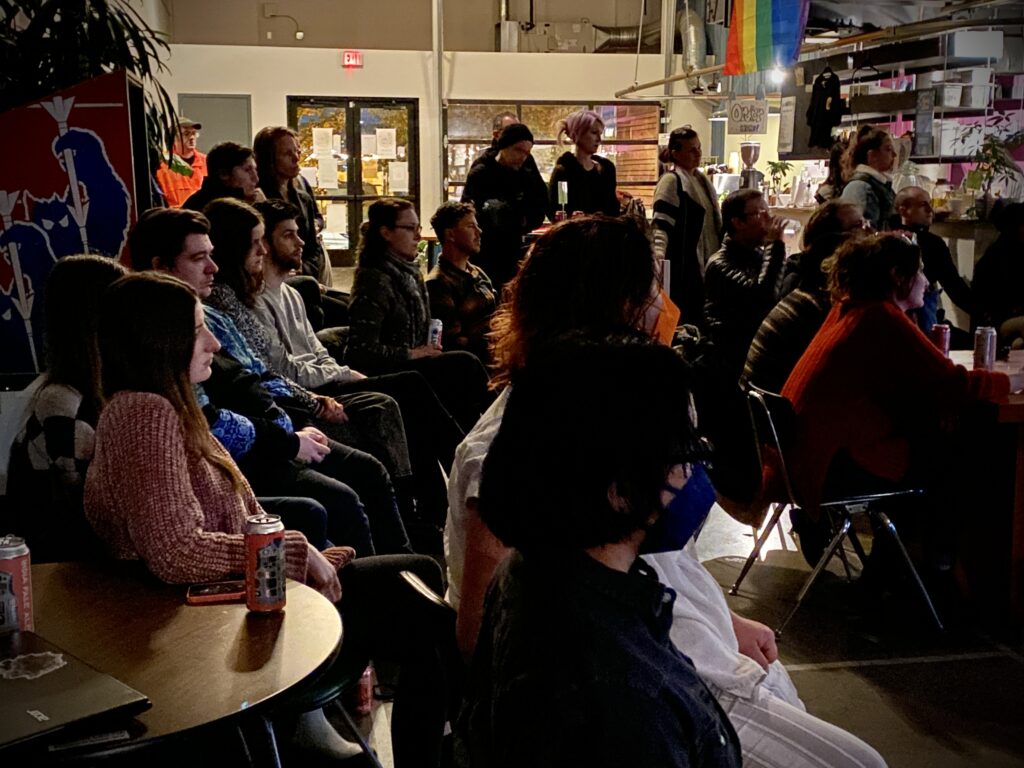
“Please hear this: There are not ‘schizophrenics.’ There are people with schizophrenia.”
— Elyn Saks
LEARN MORE: What is Schizophrenia? (National Institute of Mental Health/NIMH)
LEARN MORE: Schizophrenia: Evolution and Synthesis
Neuroscientists in the field are attempting to gain a better understanding of these biological processes by utilizing genomic data. When we compare the genetic makeup of affected individuals to those without the disorder, there are specific genetic variants that are more commonly seen in people with schizophrenia. My research focuses on one of the genes that has been identified as a potential risk factor. In my lab, we use CRISPR technology to alter gene expression in model organisms so we can take an in depth look at how variations of this gene affect behavior and brain function.

LEARN MORE: Recognition for CRISPR Gene-Editing Tool
The ultimate goal of this research is to better understand the neurobiology of schizophrenia so that we can improve the treatment options available to those with the disorder.
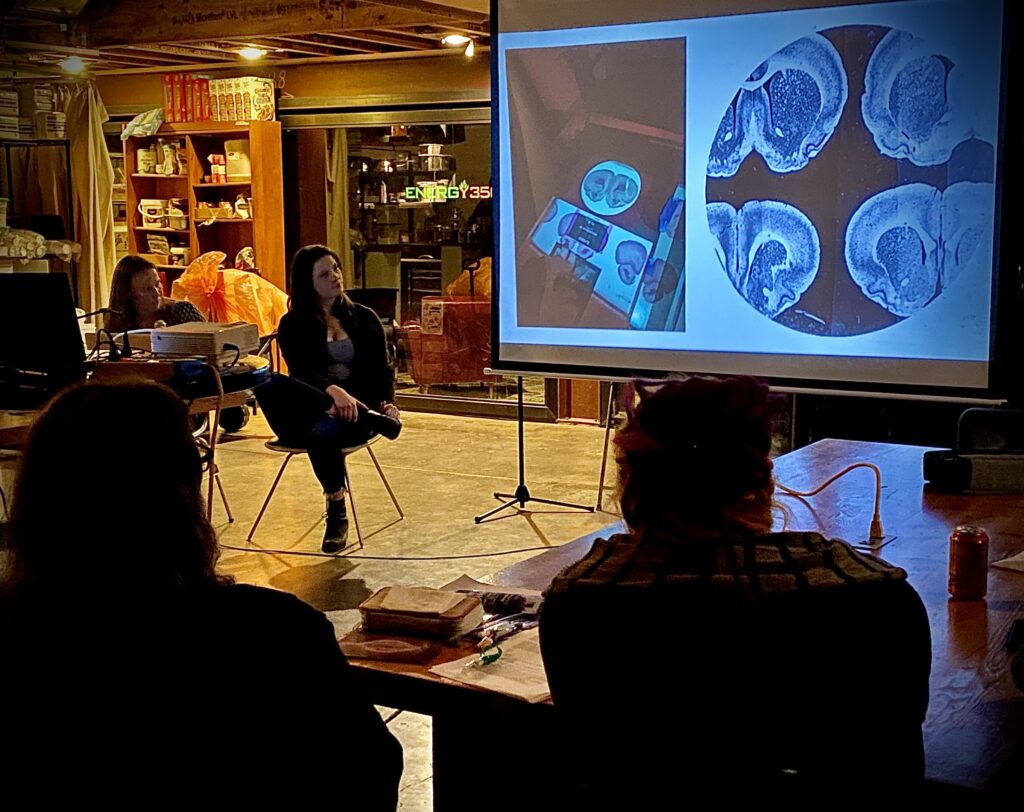
“My good fortune is not that I’ve recovered from mental illness. I have not, nor will I ever. My good fortune lies in having found my life.”
— Elyn Saks
LEARN MORE: Piecing Together the Genetic Puzzle of Schizophrenia
When scientists are trying to tackle complex problems such as mental health disorders, it is imperative to take a multidisciplinary approach. Clinical science should inform what we explore with basic science and we need what we find with basic science to inform clinical treatment.
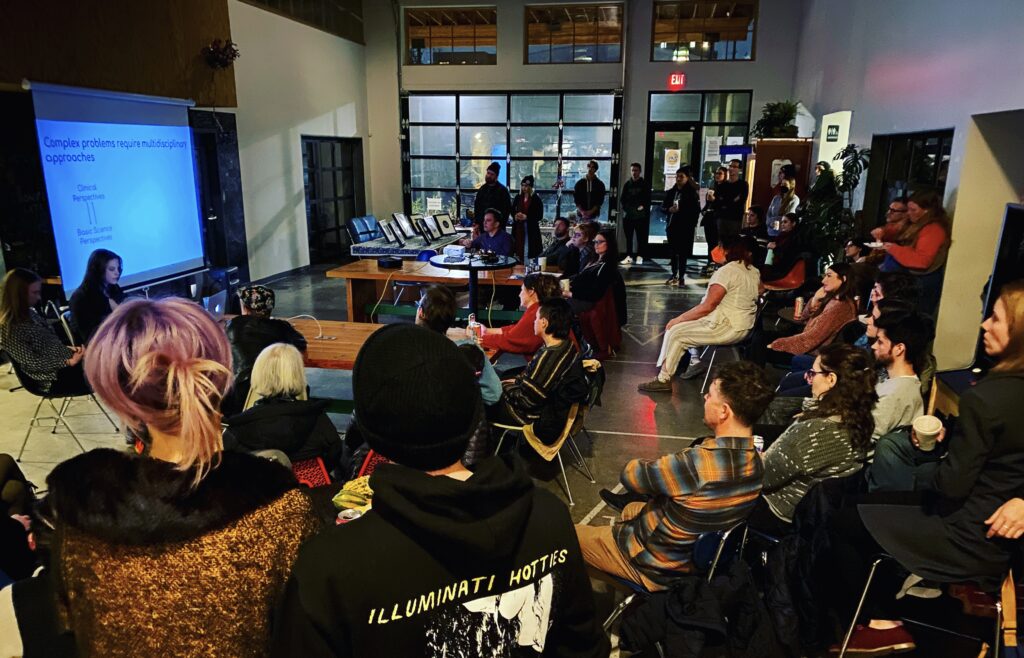
“Are the positive symptoms of schizophrenia seen negatively in all cultures – or is that a consequence of a certain type of modernity?“
— Audience member
FROM MICHELLE: Cultural context does affect how certain symptoms of schizophrenia are perceived. In fact, anthropologists have found auditory hallucinations can be experienced differently by individuals with different cultural backgrounds. In the US, people tend to report their auditory hallucinations as threatening and violent. Alternatively, people from regions of India and Africa have reported more positive experiences—relating their hallucinations to voices of ancestors or religious figures. Understanding how cultural factors play a role in mental illness is an important aspect to consider when discussing the assessment and management of disorders like schizophrenia.
LEARN MORE: Hallucinatory ‘voices’ shaped by local culture, Stanford anthropologist says
LEARN MORE: Culture and schizophrenia and other psychotic disorders
LEARN MORE: Cultural Assessment And Treatment Of Psychiatric Patients
LEARN MORE: Culture, Stress and Recovery from Schizophrenia: Lessons for Global Mental Health
LEARN MORE: Cultural Aspects of Major Mental Disorders: A Critical Review from an Indian Perspective
There is help available
If you or someone you know is struggling emotionally or has concerns about mental health, there are resources available to help. Please reach out: Help for Mental Illnesses.
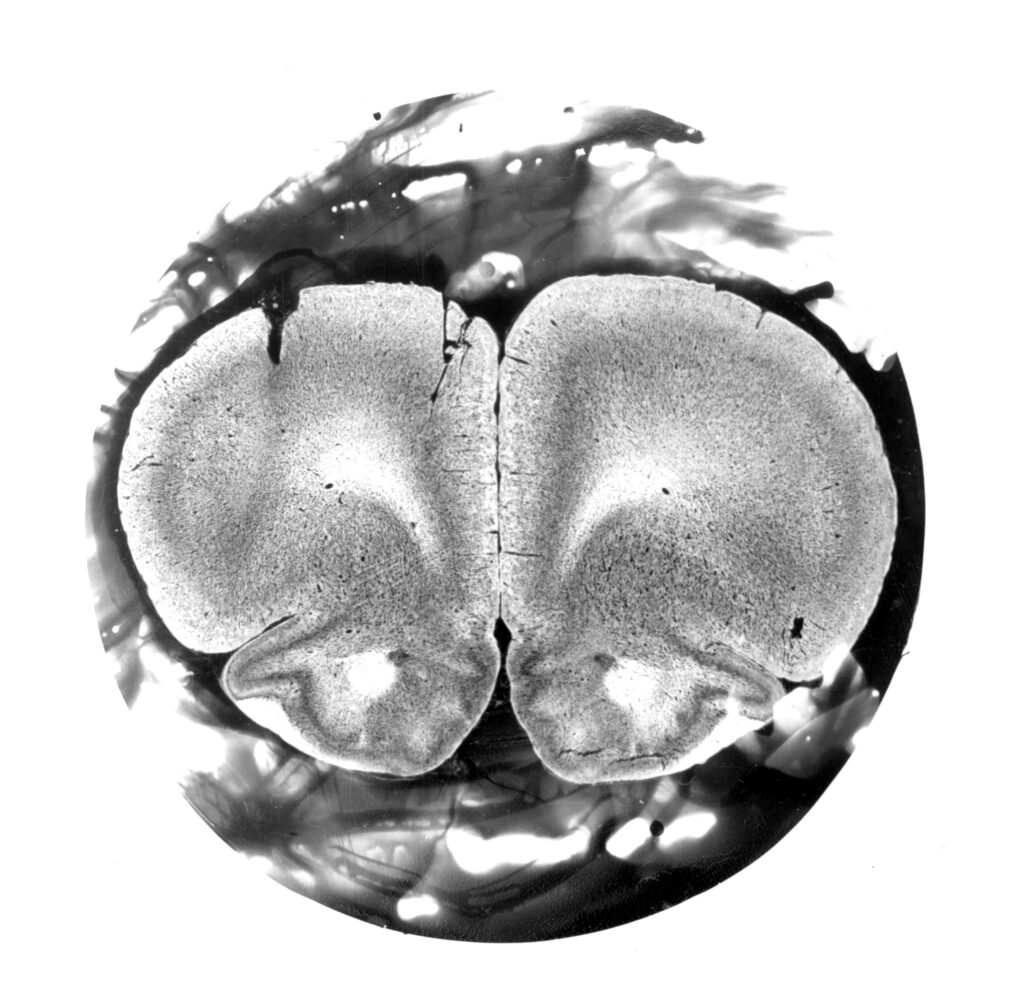
Dark Room Photography
My objective for this project was to create photographic prints from Michelle’s microscope slides. In this process, I sought to emphasize the scientific approach in which I apply to my art practice by paying close attention to the variables associated with making silver-gelatin prints. These include time, dilution, temperature, focal length of lens, and density of the image on the slide. By thoroughly observing variables, the process becomes more elucidated.
LEARN MORE: Gelatin Silver Prints
This is an outlook I apply to my entire art practice.
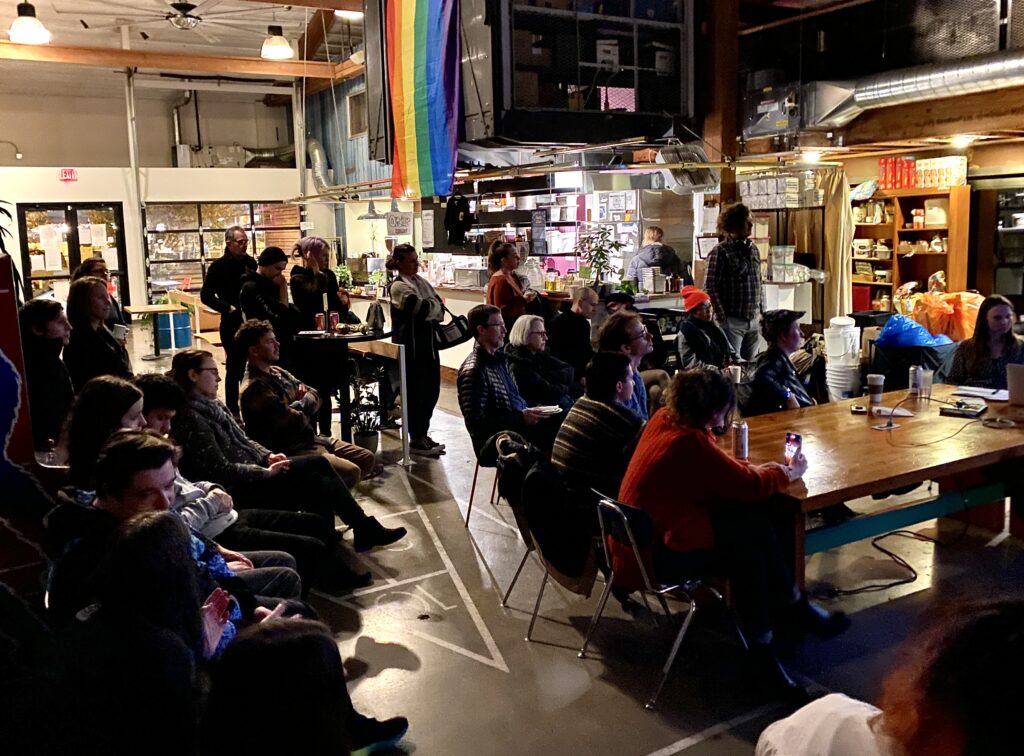
“All the planning, intuition, technical prowess, and knowledge, as well as the trust and rapport you have (or haven’t) established, will show up in the picture, frozen forever.“
— Gregory Heisler
In my endeavor to make successful prints from microscope slides, I encountered a few challenges in which I was able to think through and learn more about the variables involved with the silver-gelatin process. Some of these include becoming familiar with the correct amount of light to expose the paper to, the right amount of time the developer needs to create a fully saturated image, and the density of the microscope slide image. By challenging myself to create work from scientific subject matter, I was able to learn more about my process, as well as present Michelle’s work in a new light.
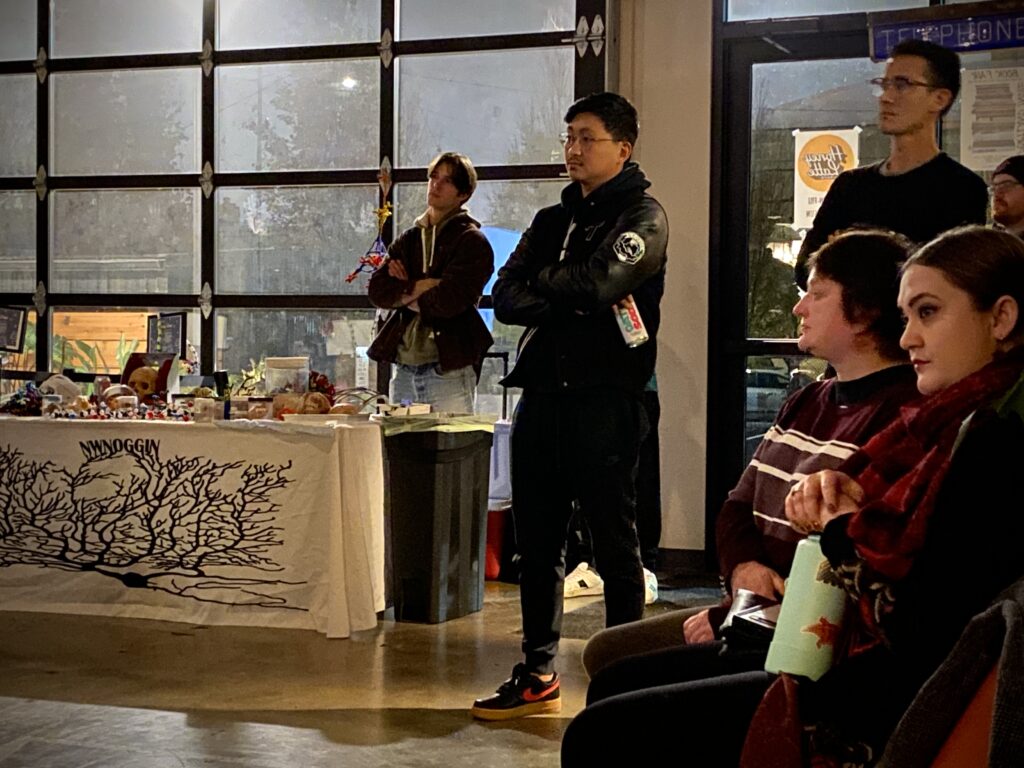
One thing that Michelle and I spoke of a lot is the idea of looking at things through new new perspectives – in this case taking an artistic approach to a scientific subject and vice versa. Another more conceptual challenge I faced while creating this body of work was overcoming the self-imposed expectation to create something beautiful, interesting and relevant from the start. I was reminded in this process just how much intuition plays a role in both the artist and scientific processes. This allowed me to let go of trying to force an outcome, and instead let my aesthetics and my curiosity guide each step in the creative process. This lesson is applicable to both art and science, and just requires one to trust in themselves and process.
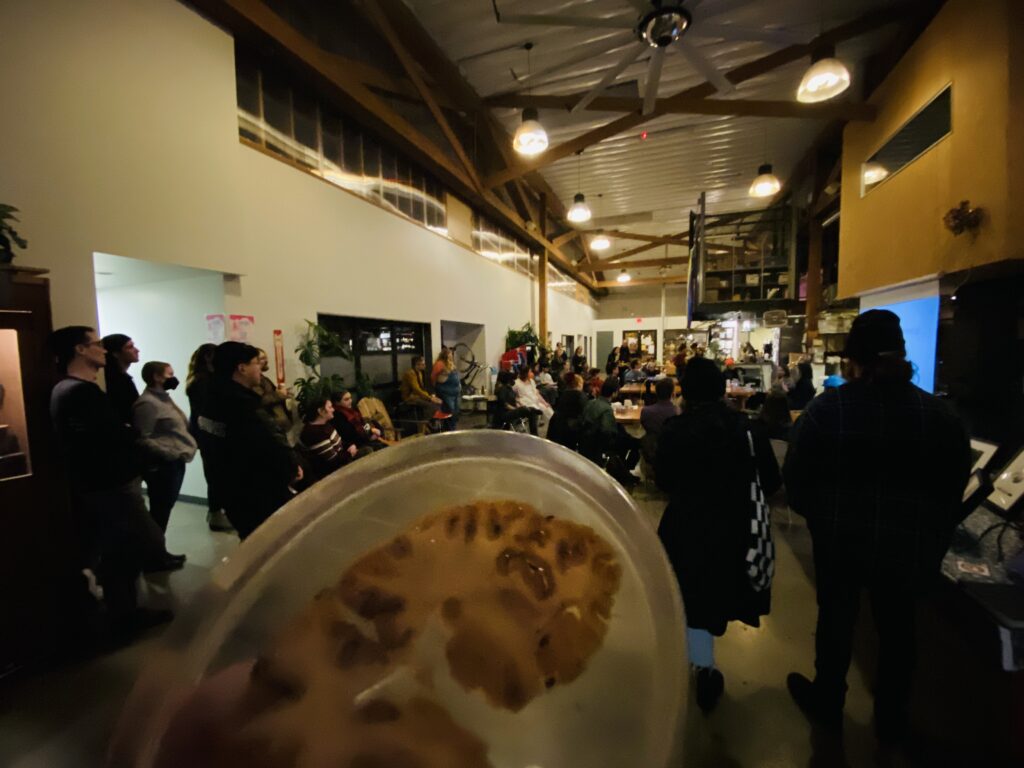
Something that we kept hitting on each time we met: we all stand to gain something when we draw from multiple perspectives. When we are working on difficult problems, considering other people’s unique points of views can help us redefine these problems outside of our typical boundaries. When we do that, we can tackle problems from all kinds of different angles.
“Skateboarding is a creative outlet and so is art. They go hand in hand for me.”
— Jason Waters
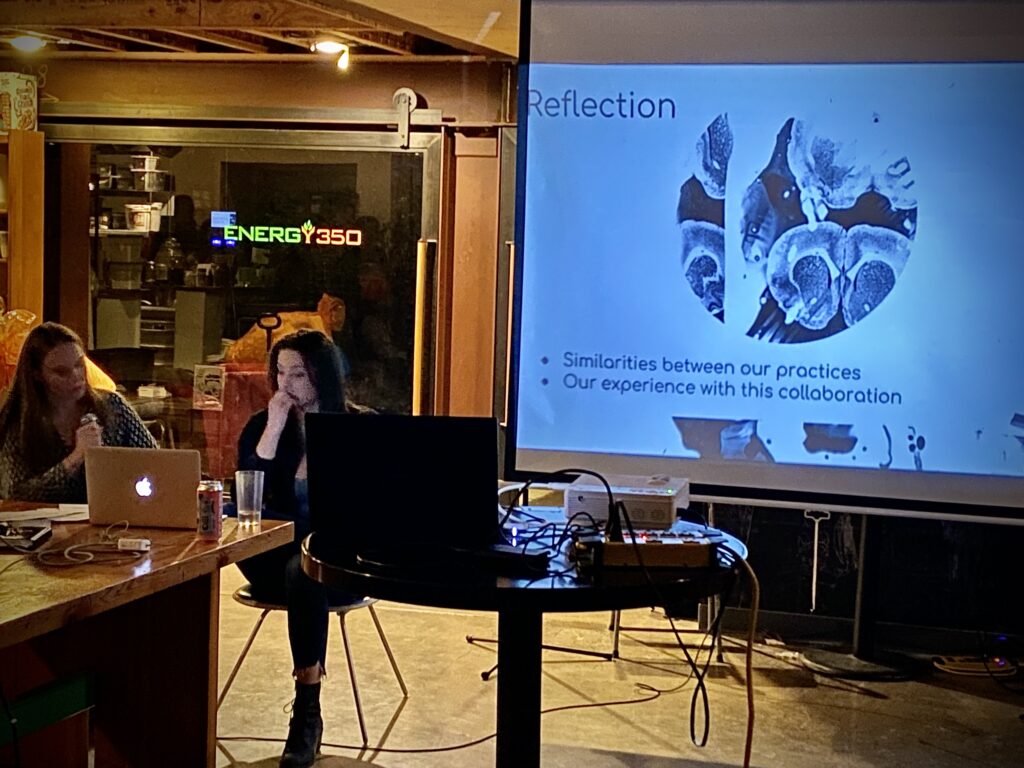
LEARN MORE: Local Skateboarder Documents Struggle with Schizophrenia in New Book
No matter how niche you may think your field of work is, we want to encourage you to talk about it with people from totally different worlds because they probably will have some interesting perspectives.
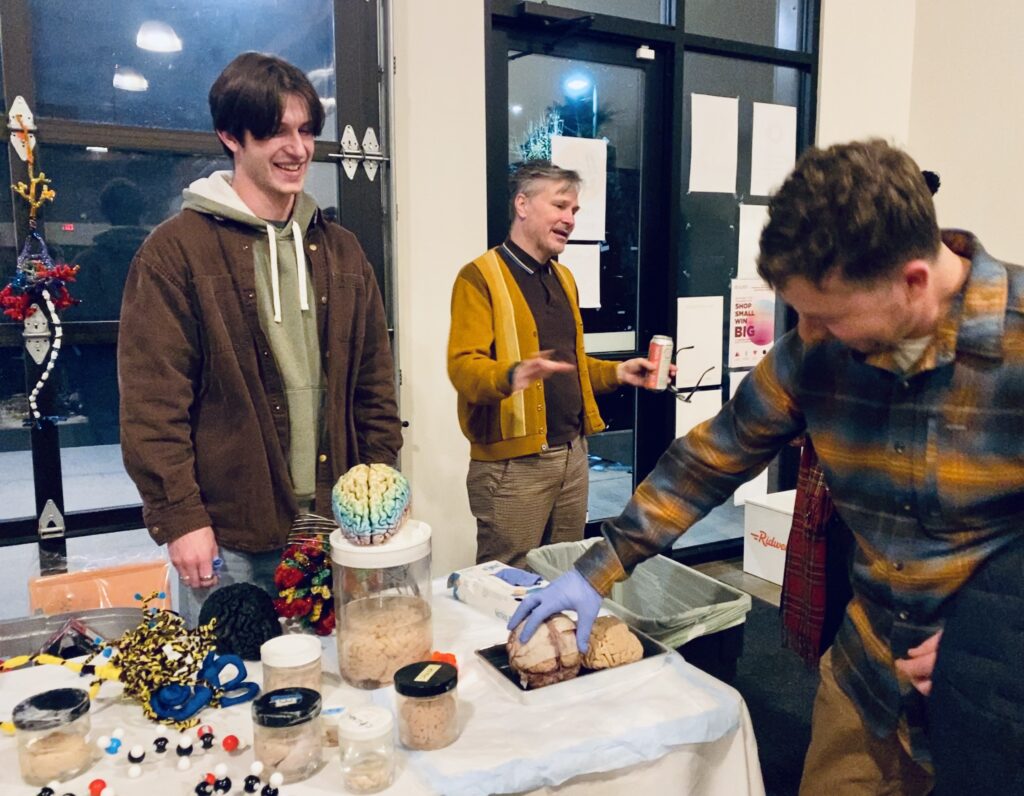
“How do you know when a piece is done, or acceptable? What makes it different from the others that are not? Does this relate to research in the lab?”
— Audience member
FROM CASSIE: The intuition that is present in both scientific and artists processes is a factor in determining when something is complete, or perhaps a piece of data is valuable. Learning to listen to this inner voice is an important part of the creative and scientific processes.
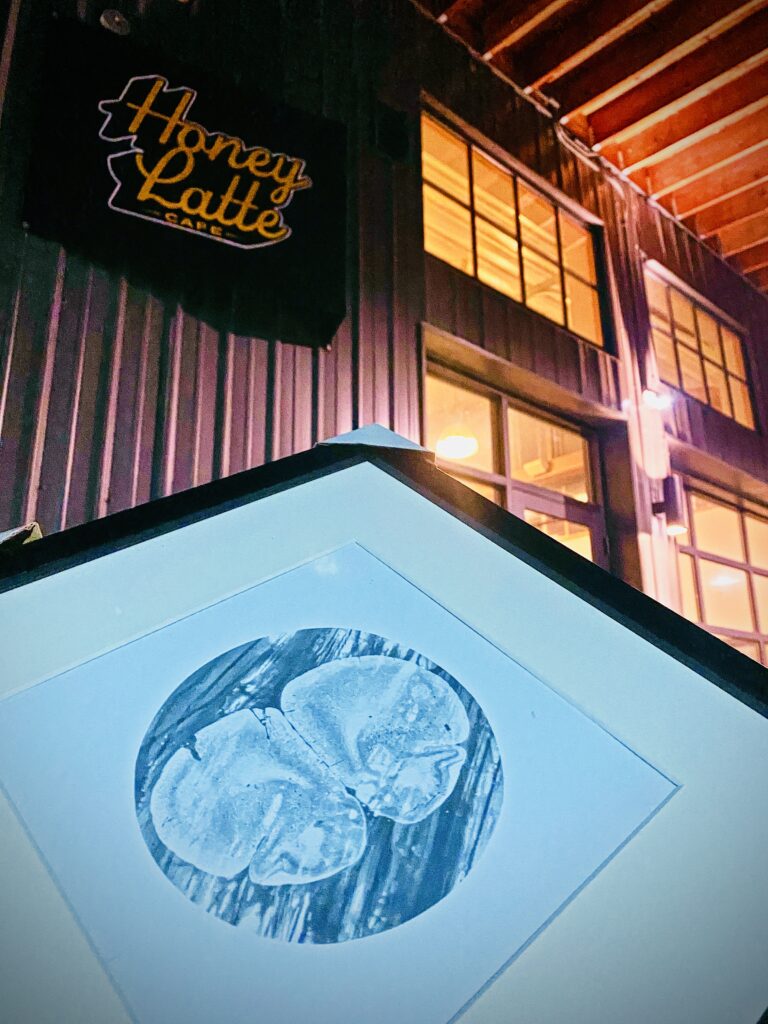
Huge thanks to everyone at Honey Latte Cafe for welcoming this Noggin Talk!


